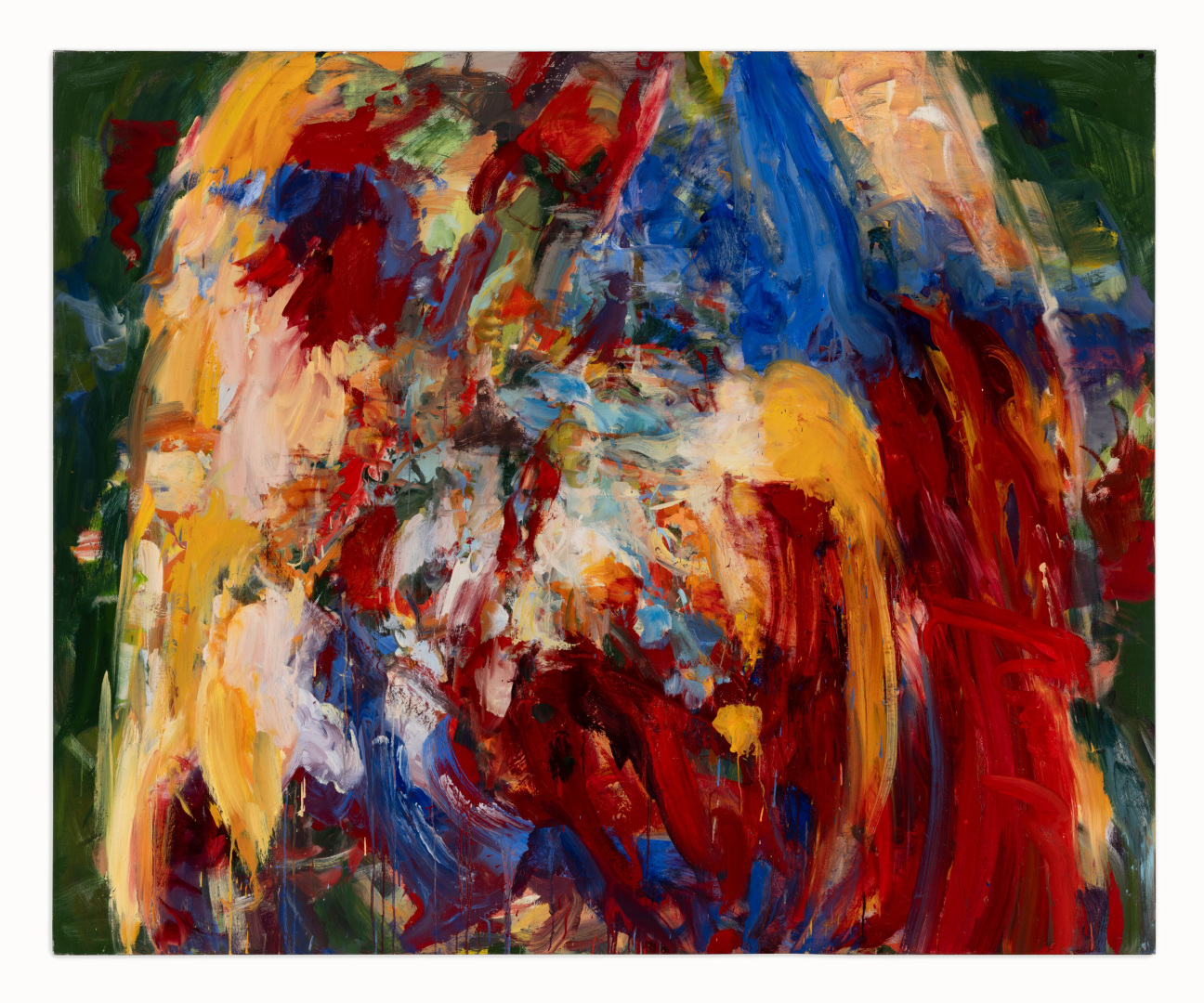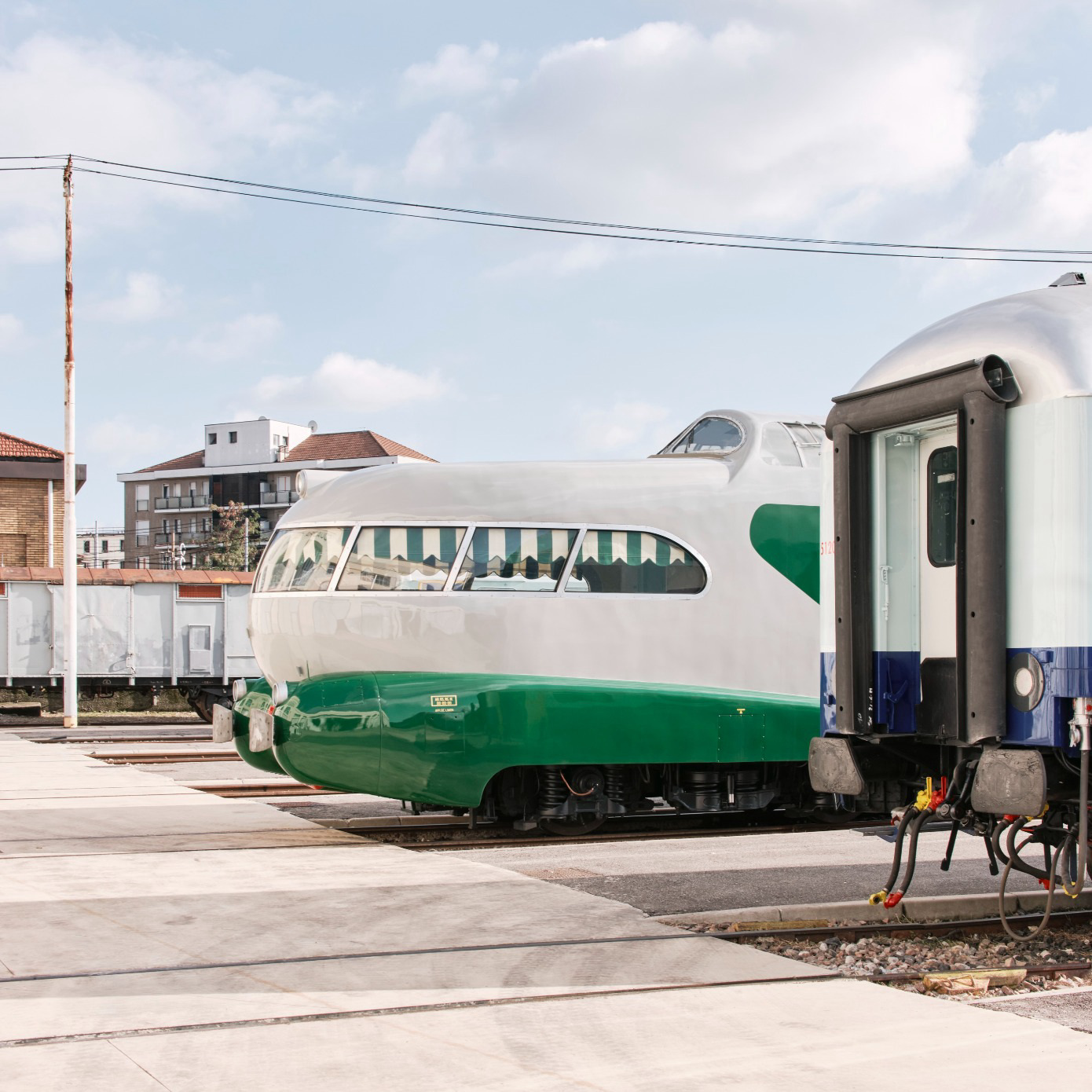
“Light is very important to me, and the quality of light here is so extraordinary,” says Catherine Goodman. The London and Somerset-based artist is in Los Angeles for the first time to mount her inaugural solo show on the West Coast at Hauser & Wirth. “There’s something very pure and bright about it.”
“Catherine Goodman: New Works” debuts a collection of canvases that mark a pivot toward abstraction in the painter’s career. “This more abstract language feels like it can enfold a few more private associations,” she tells me, gesturing at the emotional core of the exhibition. “Almost every one of these paintings is enfolding someone I love who is in a vulnerable situation—it's almost like a way of protecting them. I guess with painting I’m trying to create a blessing.”

The 62-year-old artist is early to rise, and greets her days with meditation. “Mornings are pretty sacred,” she explains. Goodman’s daily rituals allow her to locate a particular vibration of mystery, a space beyond analysis, which is essential to her process and something she sees herself as channeling more purely at this juncture in her over 30-year-long practice.
Though the freshness of morning grounds her work, a few paintings in the Hauser & Wirth show are rendered in darker, cooler shades. The post-rain light of Los Angeles has illuminated their power for Goodman anew. “A lot is revealed in the night,” she says, her thoughts often marked by the presence of an ellipsis, which leaves room for her to be surprised by her own connections. “Darkness brings with it an interiority and a softness.” Night Beekeeper II, Blue, and The Land of Lapis Angels are all “night paintings” that reveal an intimate experience Goodman has had; Night Beekeeper II in particular is inspired by one of her favorite films, Victor Erice’s 1973 The Spirits of the Beehive, which explores the enigma of relationships that toggle between proximity and puzzling distance.

In Night Beekeeper II’s case, the underpainting was thematic, but, with her boldly expressive Artemis I, it’s literal. Goodman has maintained a strong connection to Venetian paintings throughout her career, referencing them in her drawings because of how alive they are. “They often feel more real to me than looking out the window, that’s what great art does,” she muses. Artemis I began as a charcoal drawing of Titian’s 16th century painting The Death of Actaeon, which shows the Greek goddess poised with bow and arrow.
As a trustee of London’s National Gallery, Goodman occasionally visits the museum at night to be alone with the works—a privilege that’s helped sustain her practice of drawing paintings for nearly 40 years. When asked if these underpaintings could be considered first drafts, she says, “I think of them as an authentic beginning.” Goodman began drawing Titian’s Actaeon for a figurative painting, but as time went on, she remembers, it simply asked to change.
“New Works” chronicles this new pull toward abstraction in the artist’s work, a shift that affords the resulting canvases both a heightened level of interiority and an inviting quality for the viewer. “Whatever you mean by abstraction, it somehow allows individual interpretation in a way that figuration doesn’t always do,” she says.

In conversation, Goodman often evokes “the imaginative life,” a recurring theme that indicates a healthy inner child, or at least a devotion to creative play. Various elements of Goodman’s artistic process are rooted in real-time learning and a willingness to find freedom within structure. Take, for instance, her relationship to the window of half an hour: the time she takes to meditate every morning and every night, and the interval she allows herself to work on a painting before temporarily abandoning it. “It’s a way of giving myself distance,” she explains. “You need to be able to detach your ego sometimes.” Sasha, Somerset, Ellie / A Man That Gets Dressed in the Dark, Artemis I, and The Land of Lapis Angels were all made concurrently, though they’re not necessarily made to be viewed in dialogue with each other.
The artist also has a ritual of freezing random frames of films and drawing from them—yet another example of how she slaloms across canvases, mediums, space, and time. “It feels as if you’ve just frozen life for six minutes, so there’s an urgency to it,” she reasons. For Goodman, photographs don’t have quite the same magic; interrupting a moving image gets at the fleeting nature of a moment, a feeling, or a life that the artist’s painterly impressions revel in.
“Catherine Goodman: New Works” is on view through May 5, 2024 at Hauser & Wirth's Downtown Los Angeles location.




